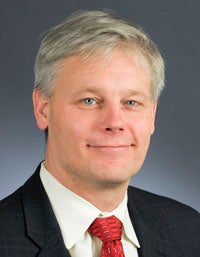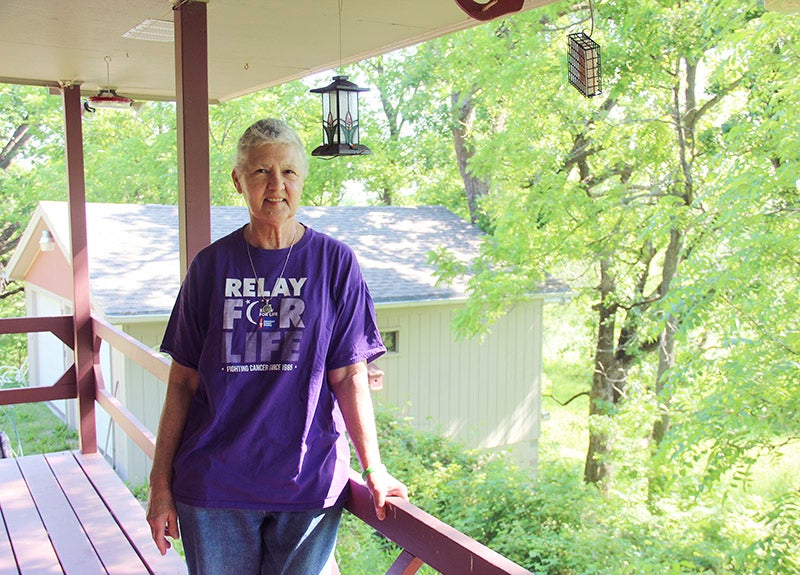Minnesota House speaker describes MNsure rates going down in region
Published 10:15 am Friday, October 3, 2014
Minnesota House Speaker Paul Thissen was in Albert Lea on Thursday to point out MNsure health insurance premiums are decreasing in southeastern Minnesota.
“When was the last time anyone talked about premiums going down?” he said. “It’s one of those instances where the marketplace is actually working.”
The average rate for policies sold on Minnesota’s health insurance exchange will go up 4.5 percent in 2015 but remain the lowest in the nation, state officials said Wednesday.
For a 25-year-old in southeast Minnesota, the monthly rate would rise 5.4 percent on the bronze plan but fall 4.3 percent on the silver plan and fall 0.1 percent on the gold plan. It would rise 5.5 percent on the platinum plan.
For a 40-year-old in southeast Minnesota, the monthly rate would rise 3.8 percent o nthe bronze plan but fall 5.7 percent on the silver plan. It would fall 2.1 percent on the gold and 3.7 percent on the platinum plan.
Thissen, in town to campaign on behalf of state Rep. Shannon Savick, DFL-Wells, said the silver plan is typically seen as the standard.
Southeastern Minnesota has been in the middle of debate since MNsure rolled out last year for having higher rates than the rest of the state, primarily influenced by its proximity to the Mayo Clinic in Rochester.
Thissen said transparency — being able to make rate comparisons around the state and among providers — was part of the MNsure system and have been good for the public dialogue about health care and health insurance.
The House speaker admitted MNsure and the federal version stemming from the Affordable Care Act don’t have all the solutions for health coverage in Minnesota and America but he called the measures “a step in the right direction.”
He said Affordable Care Act provided health insurance reform but said the country needs to have further debate on health care reform, noting it needs to be more prevention-oriented.
MNsure labels southeastern Minnesota as Area 1. It covers Dodge, Fillmore, Freeborn, Goodhue, Houston, Mower, Olmsted, Steele, Wabasha and Winona counties.
Comparisons, of course, don’t include subsidies. MNsure chief executive Scott Leitz encouraged consumers to shop early for policies, and he said more people will qualify for tax credits in 2015 than this past year.
State officials said consumers will have more choices, and highlighted southeast Minnesota, with more than 30 products in 2015 compared to fewer than 10 this year. The number of individual plans statewide will increase to 84, up from 78.
Statewide, the four holdover companies — Blue Cross Blue Shield of Minnesota, HealthPartners, Medica and U-Care — submitted average rates that ranged from a 10 percent decrease to a 17 percent increase. A fifth company will join the exchange in 2015, Blue Cross affiliate Blue Plus.
The lowest-cost and largest provider in the exchange’s first year, PreferredOne, said last month it was dropping out because it couldn’t sustain its pricing.
“We expect no other state will release rates lower than Minnesota,” Commerce Commissioner Mike Rothman said. “We achieved the lowest rates even though last year’s lowest-cost company decided to sit out this year.”
The rate announcement was a politically charged event. Republicans earlier this year accused Gov. Mark Dayton of trying to delay it until after the November election. On Wednesday, Senate Minority Leader David Hann argued the average was misleading and that many consumers will pay much more, especially with PreferredOne’s departure.
At a news conference, he passed around a price chart for a 25-year-old in the metro area that showed monthly premiums at four different coverage levels rising from 18 percent to 37 percent.
“I think the 4.5 percent rate increase is completely bogus,” Hann said.
Dayton said he was pleased by the number, and noted it doesn’t factor in subsidies that some people can get. He said most people will see a “very modest” increase and many will pay less.
“I realize we’re 34 days before an election but it is permissible to actually recognize and even applaud good news,” Dayton said.
Leitz and Dayton both said the state is better prepared for the next open enrollment period that begins Nov. 15. Leitz said the MNsure website has added capacity to load more quickly, and the state will have some 300 call-center representatives, compared to 30 when the exchange launched.
State officials declined to say how much each of the holdover companies were raising or lowering rates on average. Commerce spokeswoman Anne O’Connor said later that they agreed not to as a condition of releasing broad rate information early.
More than 327,000 people have signed up for policies via MNsure, and exchange officials have said the state’s rate of uninsured people has dropped more than 40 percent.
The Associated Press contributed to this report.







